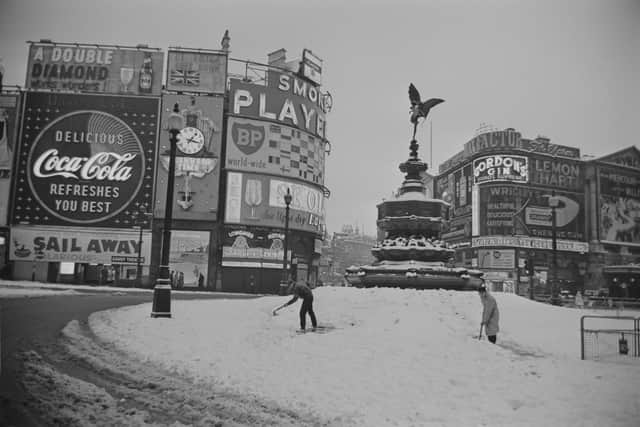The Big Freeze 1963: when was the UK’s worst winter weather, how cold was it - and when is Winter ‘63 on TV?
and live on Freeview channel 276
The UK may have endured several storms over the past week, but 2022’s winter weather is nothing compared to ‘The Big Freeze’ of 1963.
Channel 5 is airing The Big Freeze: ‘Winter 63 on 24 February, a documentary starring Dame Joanna Lumley, which takes a look back at what happened during the worst winter weather in the UK since 1739.
Advertisement
Hide AdAdvertisement
Hide AdHere’s what you need to know about The Big Freeze - and what the documentary is about.
What was The Big Freeze?
Back in 1963 The Met Office recorded temperatures as low as -22 degrees in some parts of the UK.
The winter weather was the worst that had been experienced since 1739.
People had to endure snow drifts up to 20 metres high and in Kent the sea froze for a whole mile from the shore.
Advertisement
Hide AdAdvertisement
Hide AdIt was so cold that windows inside homes froze shut, rubbish could not be collected and power cuts became an everyday occurrence.
The ground was frozen solid meaning that it was not possible to bury the dead until the spring thawed the ground later in 1963.
Water pipes were frozen solid for weeks at a time which meant that people had to use buckets to collect drinking water.
The average temperature in central England in January of 1963 was a chilling -2.1 degrees.
Advertisement
Hide AdAdvertisement
Hide AdIn February of 1963 winds reached Force Eight on the Beaufort Scale, which goes up to 46mph.
On the Isle of Man wind speed was recorded at 119 miles per hour.
By March things began to settle down and on 6 March the people of Britain woke up to a landscape without frost.
There has not yet been a winter that has surpassed the freezing temperatures and conditions of 1963.


Why did the Big Freeze happen?
Advertisement
Hide AdAdvertisement
Hide AdAn anticyclone from Scandinavia brought in cold continental air from Russia to the UK.
It replaced a mild stream that usually came from the Atlantic.
Unfortunately for the population of the UK in 1963 that wind was blocked by an area of high pressure near Iceland.
Where in the UK did The Big Freeze hit?
It impacted the whole of the UK for the three months following Boxing Day of 1962.
Advertisement
Hide AdAdvertisement
Hide AdIt was most severe in England and Wales where it is said to have been the worst winter weather on record since the 1700s.
Large rivers including the Thames in London and the Dee in Chester froze over completely.
The ice was so thick on many of the UK’s rivers that people managed to ice skate on them.
A blizzard hit Wales and the southwest of England on December 29-30 which caused snow drifts of up to six metres deep.
Why was it named The Big Freeze?
Advertisement
Hide AdAdvertisement
Hide AdThe weather was so unusual that it was named ‘The Big Freeze’ on Boxing Day of 1962.
The name rings true as snow fell for three months and caused widespread chaos.
What is Channel 5 documentary The Big Freeze: Winter ‘63 about?
The Big Freeze: Winter ‘63 will air on 24 February at 9pm on Channel 5.
The 90-minute show will feature interviews with people who remember the devastating weather event and will delve into the history surrounding the bizarre three months of snow.
It will feature Dame Joanna Lumley, John Craven from Countryfile and producer Pete Waterman.
Comment Guidelines
National World encourages reader discussion on our stories. User feedback, insights and back-and-forth exchanges add a rich layer of context to reporting. Please review our Community Guidelines before commenting.